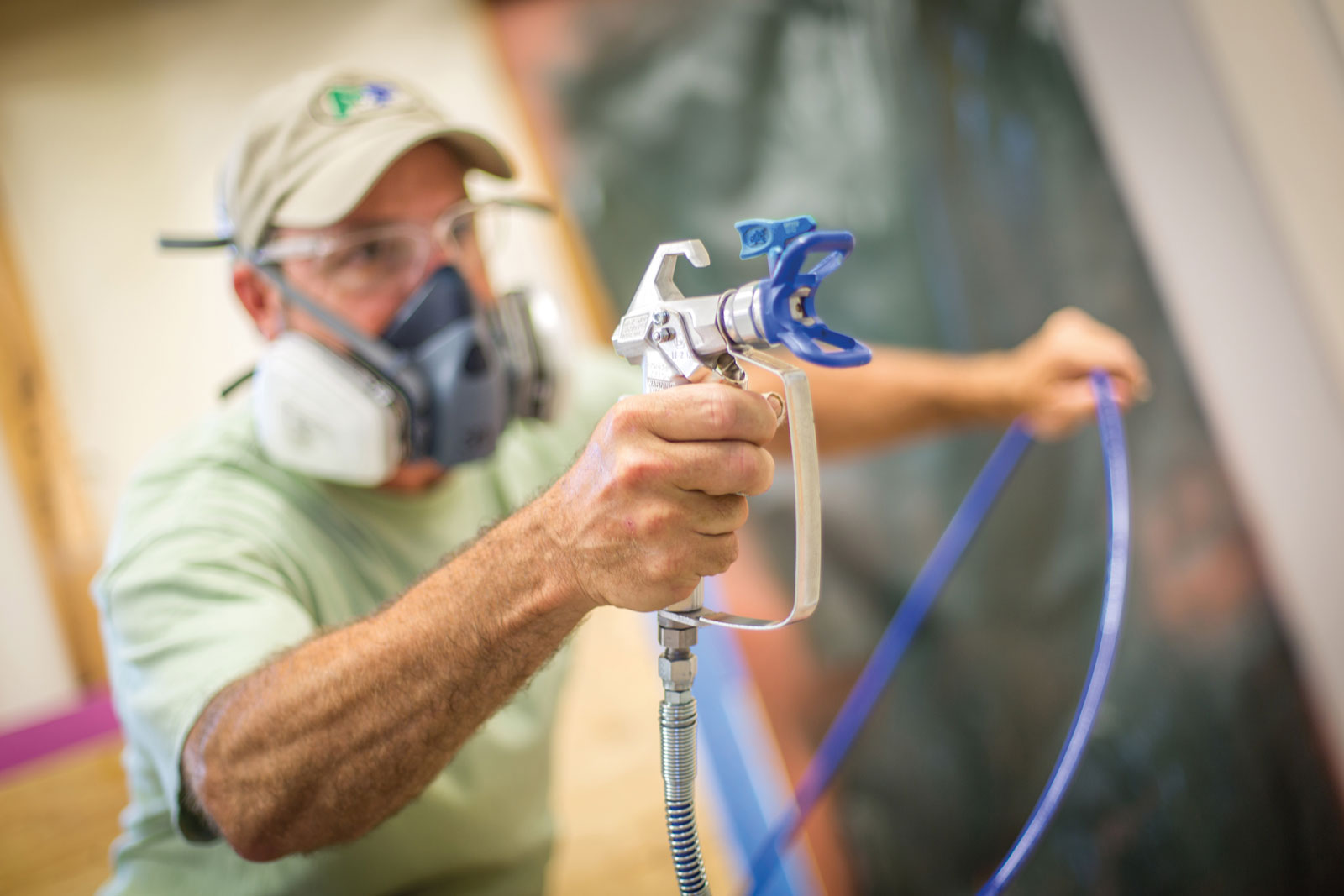In the second part of our series on airless sprayers, we look at the techniques to get the most from your airless equipment.
In the last issue, we looked at selecting the best airless sprayer and tip for your job. In part two we will highlight the techniques to make full use of your sprayer and produce flawless results.
A good spray pattern indicates that the paint or coating is completely atomised and distributed evenly onto the surface. Several techniques help determine the quality of the spray pattern and the quality of the finish. They include everything from adjusting the pressure to the aiming of the spray pattern and movement of the spray gun. The following techniques ensure that you will get a long-lasting quality finish:
Aiming the spray pattern
The spray gun should be held approximately 30cm from the surface and aimed straight (both horizontally and vertically) at the surface. Extremely large tips will require you to move further away to achieve a good spray pattern. The spray gun should move across the surface with the wrist flexed to keep the gun pointed straight at the surface. ‘Fanning’ the gun to direct the spray at an angle will cause an uneven finish.
Triggering technique
The spray gun should be triggered after beginning the stroke (also call the lead stroke) and released before ending the stroke (also called the lag stroke). The gun should move during both the trigger squeeze and trigger release. This technique prevents blotches of thick coating at the beginning and end of each stroke.
Overlapping technique
This technique ensures that an even amount of coating has been sprayed onto the surface. The spray gun should be aimed so that the tip points at the edge of the previous stroke, overlapping each stroke by half. To maximise efficiency when spraying on broad, open surfaces (for example, ceilings and bare walls), the outside edges of walls should be sprayed first. The middle can then be sprayed quickly, requiring less precise strokes.
Painting inside corners
When spraying corners, the gun should be aimed into the corner, spraying along the corner, rather than spraying back and forth across the corner.
Controlling thickness of the coating
The key to proper coverage is controlling the coat thickness. To ensure proper coverage and a quality finish, do not adjust the pressure to make the coat thicker or thinner. The pressure should be adjusted to the lowest pressure with a good spray pattern. If the coating is running down the surface, then the coat is too thick.
One or more of the following will help:
- Move the spray gun faster.
- Choose a smaller tip: be sure the sprayer is rated to handle the size tip being used.
- Choose a tip with wider fan.
- Make sure the spray gun is far enough away from the surface (30cm).
If the finish is not covering the surface, then the coat is too thin. One or more of the following will help:
- Move the spray gun slower.
- Choose a larger tip.
- Choose a tip with a narrower fan.
- Make sure the spray gun is close enough to the surface.
High standards
To ensure your airless sprayer is maintained and continues to perform at a high standard, many different components need to be checked, tightened, cleaned or replaced as needed. These include: inlet screen, manifold filter, gun filter, tip filter, hose connections, inlet suction tube, gun body, tip guard and tip, trigger safety, trigger guard and power cord. The appropriate size filters should be used for the material being sprayed. Filters should be checked daily – if clogged more than 20 per cent, replace. If punctured, replace immediately.
It is also important to visually check hoses every time you spray for internal build-up, cracks, kinks, holes, blisters, abrasions and damage to the hose cover.
Further maintenance tips include using two wrenches when tightening all hose connections and checking the conductivity of your hose once per quarter with an ohmmeter. Conductivity is important to dissipate static electricity build-up at the gun. You should also ensure good airflow path into the motor and wipe the shroud clean after each use.
Good airflow should be maintained to keep the sprayer cool – do not cover the pump with a rag or plastic
while spraying.
The unit is not suitable for pressure washing.
It is also essential you don’t let water or paint freeze in internal parts or the hoses as the expansion as water freezes can cause severe damage.
If you follow these maintenance tips and take your sprayer in annually for a general service check, you will ensure quality paint jobs for years to come.
Part three of our special feature on airless spraying is available here.

